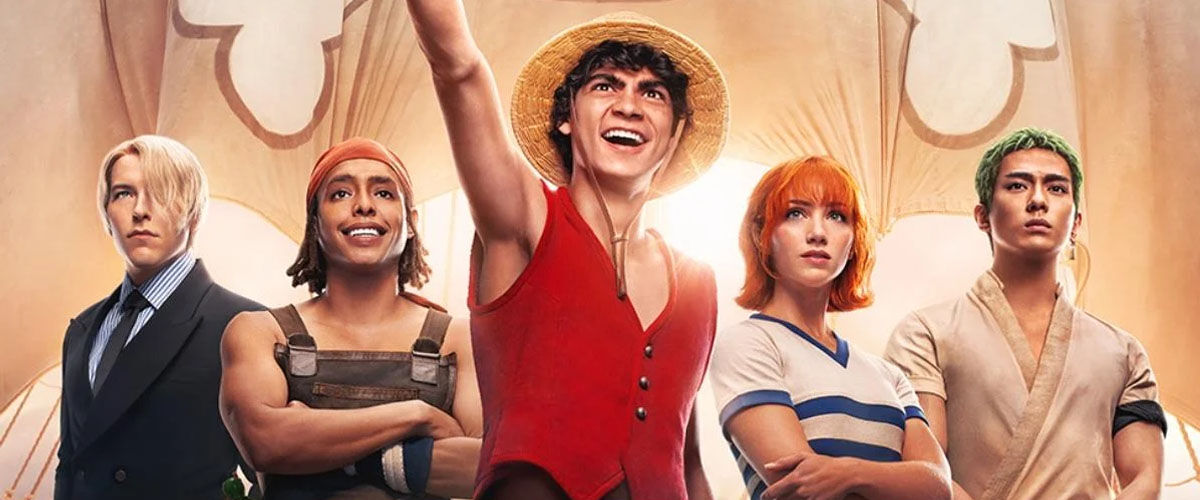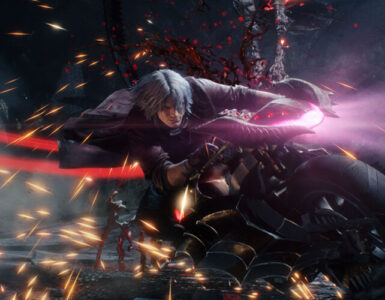There are a lot of things to love about Eiichiro Oda’s iconic One Piece manga. For some, it’s the elaborate, thoughtfully-crafted character backstories, and for others, it’s the unwavering belief that dreams can come true. Then, consider the rest of the equation: a rich lore, exhilarating, epic battles, an intricate balance between humour and serious matters, and the anime classic – the sense of hope stemming from underdog victories and the power of friendship.
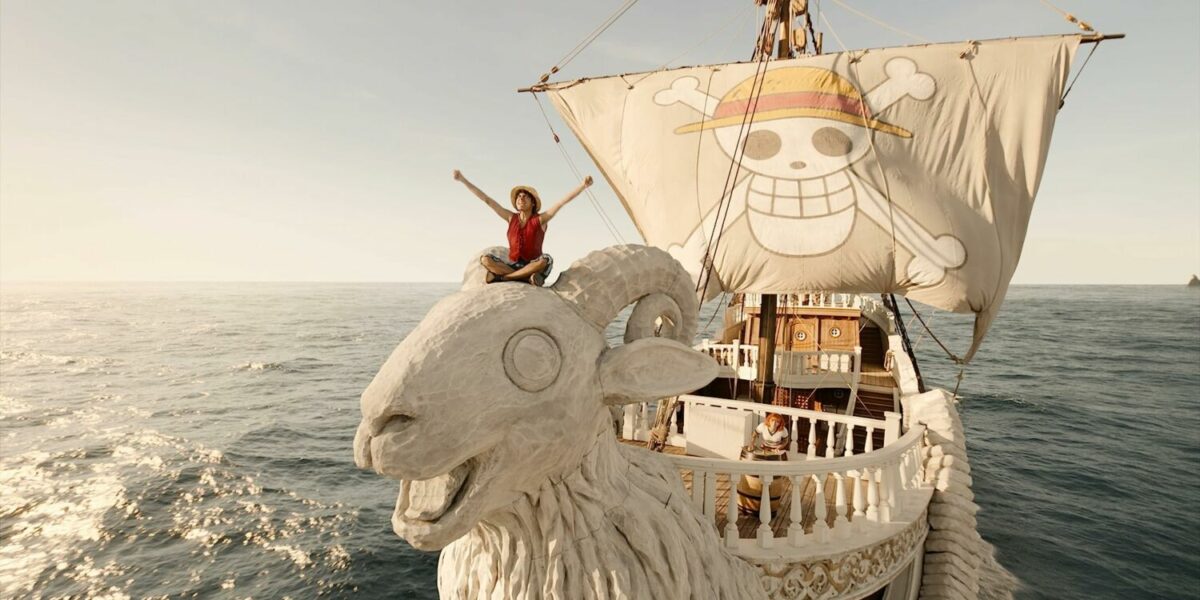
The enduring legacy is proof of its far-reaching influence, which continues to burn brightly 26 years after its debut across a staggering 106 tankōbon volumes. Alongside Naruto and Bleach, it rose to become one of the Big Three of Weekly Shonen Jump in the mid-2000s, cementing its spot as a beloved anime gem and all-time fan favourite. The former two are no more, but One Piece is still going strong, oozing endearing charm as it presents one swashbuckling adventure after another.
Suffice to say, expectations are sky high for Netflix to accurately capture the essence of the series in its eight-episode live-action adaptation. The show has plenty to live up to, especially with Oda’s stamp of approval under its belt, and it’s a difficult endeavour exacerbated by existing circumstances. For one, Western takes on live-action anime productions hardly ever find favour with fans, and there’s enough proof of this to go around (Dragonball Evolution or Death Note, anyone?). Balancing faithfulness to the source material with originality also calls for a delicate touch that’s often lacking by non-Japanese creators.
Here, there’s some semblance of the finesse required to find the middle ground. Netflix’s One Piece leans into the mix of both old and new storytelling elements, and it’s able to sail well enough – even if its landing doesn’t always stick. The series opens with the Romance Dawn Arc, which spans the first four anime episodes, and covers the events leading up to the start of the Loguetown Arc, after Luffy receives his first bounty.

Played by Iñaki Godoy, the Straw Hat Pirate is the main driving force behind the story. A young adventurer with big dreams and a longing for freedom, he leaves his small village to explore the Grand Line in search of the mythical treasure known as “One Piece”, so as to become King of the Pirates. Along the way, he crosses paths with enemies and allies alike, gathers friendly faces for his ragtag crew, and embarks on perilous adventures together as the Straw Hat Pirates, named after Luffy’s headwear.
Joining Luffy’s high-sea undertakings are OG members Roronoa Zoro (Mackenyu), Nami (Emily Rudd), Sanji (Taz Skylar), and Usopp (Jacob Gibson), each with their own tale to tell. The One Piece series dedicates an entire episode to fleshing out a character backstory, charmingly signposted via the title card, where the letter ‘O’ will have a different design in every episode.
Instead of a standard look, the logo changes to reflect a character’s signature feature, such as Usopp’s bandana for Episode 3, which focuses on him, and Zoro’s three swords for his own exposition. It’s a nice little touch that lends even more personality to an already colourful, lively presentation, and those who’ve watched Ozark would recognise this form of set-up.
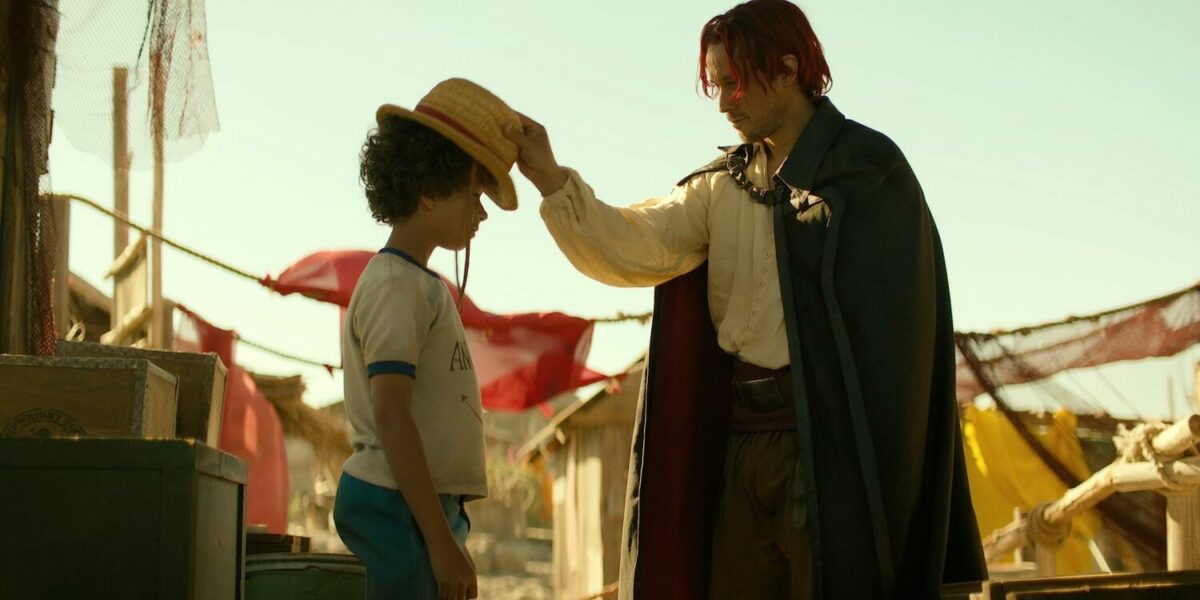
As per Oda’s demand to preserve the origins he started, the live-action adaptation sticks to what’s been established in the source material and doesn’t remove or add any narrative bits. Longtime fans can, as such, expect screen time for familiar faces from a character’s past, including Kuina (Audrey Cymone), Bell-Mere (Genna Galloway), and Shanks (Peter Gadiot). Like Shanks, some of their appearances carry over to the present timeline, such as Zeff (Craig Fairbass), Kaya (Celeste Loots), Nojiko (Chioma Antoinette Umeala), and Arlong (McKinley Belcher III).
What’s different in Netflix’s adaptation, though, is the order of these revelations, the circumstances leading up to certain events, and at times, the locale. It’s a bold approach that works as much as it stumbles – to complement the one-major-backstory-per-episode format, One Piece also packs an entire story arc into one episode (sometimes, one and a half). While this makes it easier for newcomers to the world at large and the characters’ motivations, the lacking context takes away some of the detail the original work is known for.
For instance, the need for a ship cook can come across as bizarre in the live-action series, but the source material actually offers an explanation for this. Prior to Sanji’s joining, the crew cured a character of scurvy, leading them to understand the importance of having proper nutrition onboard. Another notable example is the notorious rivalry between Sanji and Zoro: the series glosses over the former’s disparaging comment about Zoro’s wish to fight Dracule Mihawk (Steven Ward), the greatest swordsman on the high seas, so the disdain may seem rather uncalled for.

In a similar vein, these deviations – and there are quite a number of them – bleed over to other aspects of the show, and they do make sense for the most part. One Piece loyalists might take issue with the way its Netflix counterpart introduces Vice Admiral Garp (Vincent Regan) and his relationship with Luffy at such an early stage, but it flows well for the casual viewer and helps in establishing important, relevant story points. While not exactly necessary, the shift to a circus setting for the confrontation between Luffy and the villainous, maniacal Buggy (Jeff Ward) is logical, since Buggy is, you know, a clown.
Other times, though, the creative liberty doesn’t work in its favour. Pacing can be inconsistent across episodes, particularly in Episode 4, which puts the spotlight on Usopp. The episode’s setting seems to lean strongly into the psychological thriller vibe, but the suspense ends up being too dragged out to be impactful. Certain episodes feel slower as well, and smaller changes, like Luffy using his sense of smell to track down Baratie Restaurant in a fog (as opposed to given directions in the original series) come across as slightly far-fetched.

Fortunately for fans, there’s still plenty to enjoy. Netflix’s One Piece recreates the significant events in a character’s life with great accuracy, from Luffy’s heroic rescue of Zoro and the latter’s fight with Mihawk, to the scene where Nami stabs her tattooed arm during the Arlong Park Arc. The action is well choreographed, even with the prominent wirework, with just enough bloodshed to reflect the ruthless pirate way of life, but not excessively so.
Between the well-rendered visual effects, the head-bopping soundtracks (both in and outside of battle), and the anime’s flair for exaggeration, fighting sequences are a fun watch. Paying tribute to the dramatic flair, the series has moments where the camera freezes for a few seconds, before showing blood spurting out of characters, or them collapsing in the wake of an intense fight. Oh, and not forgetting the comical factor – the original work leaned heavily into humour, and there’s a lot of that to go around here.
The best part of One Piece, though, is the cast. Godoy shines as Luffy, stepping deftly into his free-spirited, energetic persona, and perfectly capturing his serious moments. Likewise, Mackenyu, Rudd, Skylar, and Gibson are able to expertly harness the charm, insecurities, and personality of their respective characters, breathing life into their live-action debut.
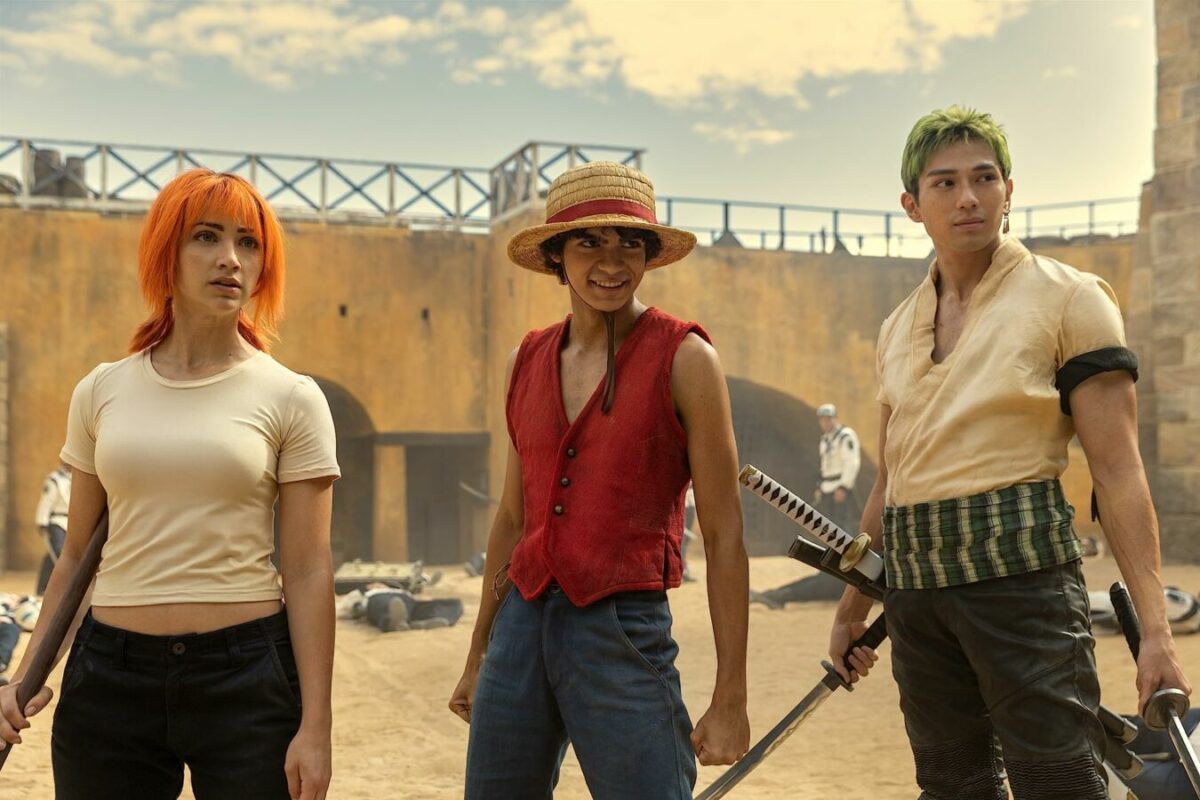
This synergy extends to the actors’ on-screen dynamics. Skylar and Mackenyu play nicely into the Zoro-Sanji rivalry, while Rudd’s interaction with Mackenyu brings out the snark that colours the crew’s banter with one another (Zoro: “Do you think he’s got brain damage? Nami: “I think that everyday”). A bonus treat for anime and manga fans – the iconic Straw Hats’ ceremony gets its own special scene, too.
Even the side characters and antagonists embody the spirit of their characters, with Ward’s Buggy and Morgan Davies’ Koby from The Marines, one of the major antagonist groups in the original series, coming in as unexpected standouts. And yes, Koby, along with fellow Marine recruit Helmeppo (Aidan Scott), get a lot more time to shine here.
Netflix has made sure to retain the iconic look of each character by paying attention to small details, such as dressing Rudd in one of Nami’s classic outfits from the earlier anime episodes. The diverse cast is also a breath of fresh air from traditional depictions in both Western and Japanese productions, where representation is often an afterthought. Not every character is faithful to their original design, however – Galloway’s Bell-Mere, for instance, lacks her signature mohawk-like haircut – and it isn’t necessarily a bad thing, just more of a cautionary note for the more fastidious One Piece enthusiasts.
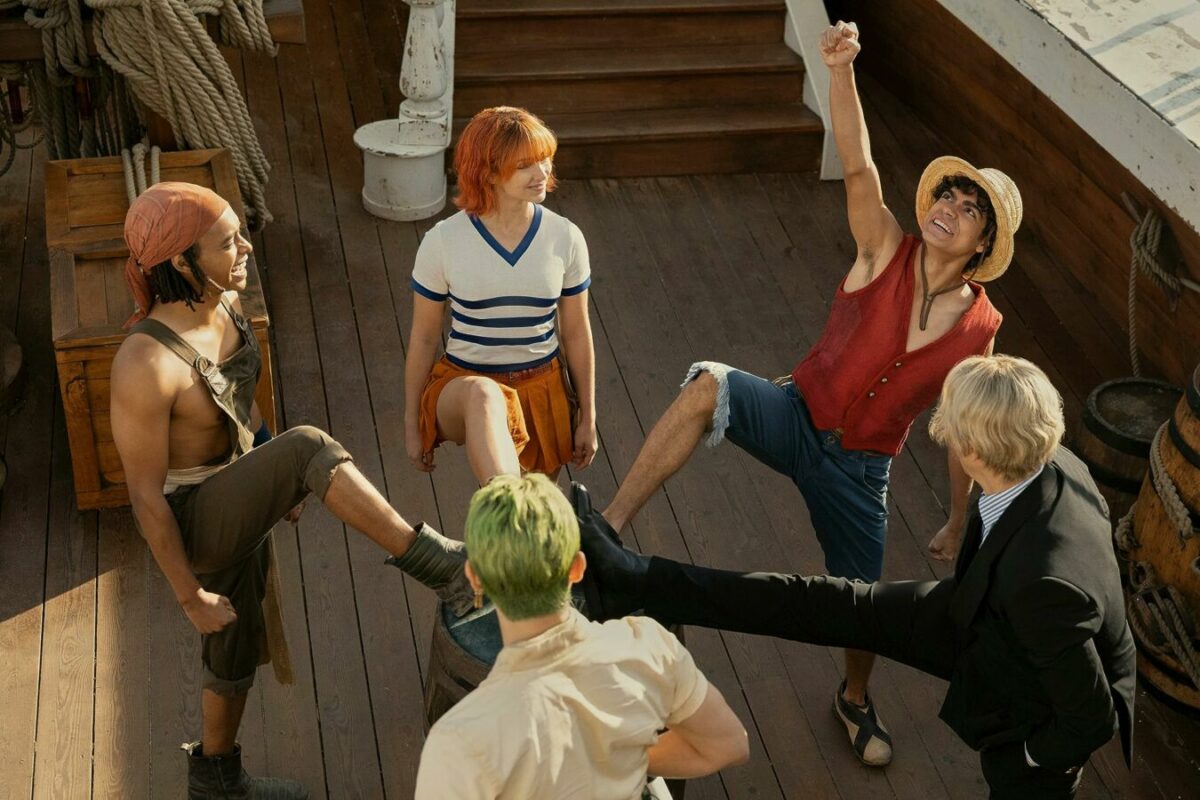
In navigating the in-between waters of originality and faithfulness to the source material, Netflix’s One Piece manages to carve its own distinctive identity. It isn’t the perfect adaptation, bogged down by some creative decisions that may not always find favour with loyalists and longtime fans, but promises plenty of fun, feel-good moments, battle-fuelled excitement, and most importantly, heart. Love it or hate it, one thing’s for sure: the camaraderie of the Straw Hat Pirates is undeniable, and it’s this classic the-power-of-friendship anime rhetoric that will take the series far beyond its other live-action counterparts.
GEEK REVIEW SCORE
Summary
Netflix’s One Piece isn’t the flawless beat-for-beat adaptation that fans may have hoped for, but it delivers its own brand of charm, and true to the spirit of the original series, the dream to become something more.
Overall
7.9/10-
Story - 8/10
8/10
-
Direction - 7/10
7/10
-
Characterisation - 8.5/10
8.5/10
-
Geek Satisfaction - 8/10
8/10

